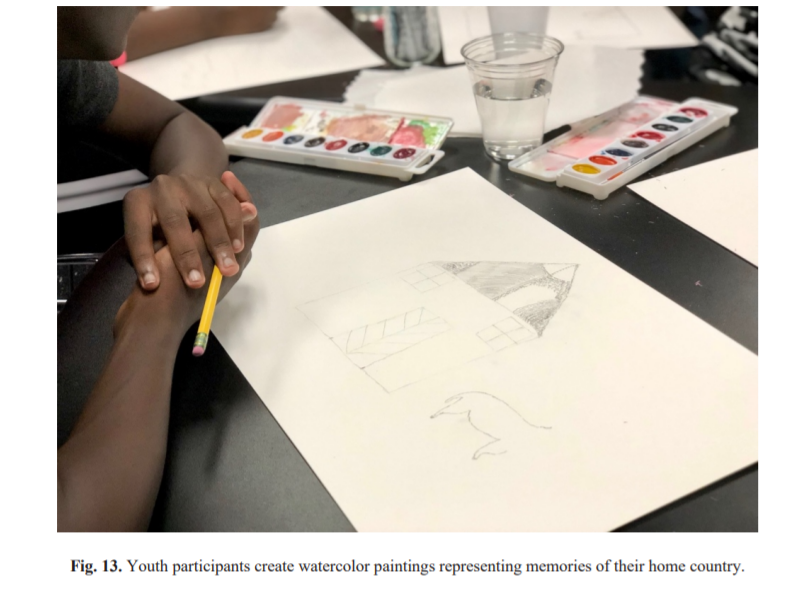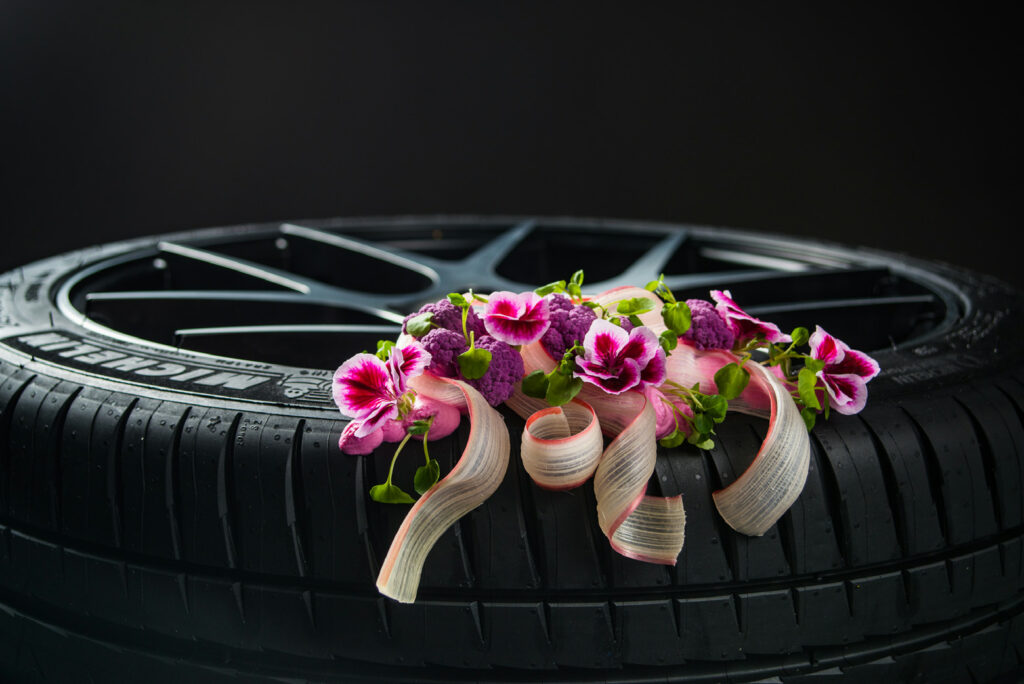Titel der Diplomarbeit: Vom hässlichen Entlein zum Schwan. Zur Darstellung von Schönheitsoperationen im Fernsehen.
Verfasserin: Andrea Zeidler
Jahr der Veröffentlichung: 2012
Angestrebter akademischer Grad : Magistra der Philosophie (Mag.phil.)
Studienrichtung lt. Studienblatt: Theater-, Film-und Medienwissenschaft
Universität: Universität Wien
Sprache: deutsch
Seitenanzahl: 76 Seiten
Die von mir gewählte Arbeit befasst sich mit Schönheitsoperationen, Medien und Schönheit und bietet ein Hintergrundwissen dieser Bereiche aus soziologischer, medienwissenschaftlicher und historischer Sicht. Diverse Selbstverbesserung-Shows werden kritisch untersucht.
Weiters werden MakeOver Shows analysiert und mittels der in der Arbeit beschriebenen soziologischen und medienwissenschaftlichen Hintergründe eingeteilt werden. Insbesondere wird auf das österreichische Format „Ein Leben für die Schönheit von ATV eingegangen.
Gestaltungshöhe
Die Arbeit ist sehr sporadisch gestaltet und nicht besonders ansprechend.
Es handelt sich fast ausschließlich um Text, denn die Arbeit kommt mit 8 Abbildungen aus. Auch diese dienen der Information und nicht der Gestaltung. Da mir lediglich ein PDF vorliegt, kann ich eine Druckversion hinsichtlich Papierwahl oder Covergestaltung nicht beurteilen. Auszugehen von der PDF-Version wird es hier jedoch wohl auch um eine Standardgestaltung halten.
Innovationsgrad
Der Theoretische Teil ist eine Zusammenfassung und Interpretation aus vorhandnen Werken. Der Innovationsgrad ist demnach nicht hoch.
Da die Arbeit schon vor 9 Jahren verfasst wurde, sind die Erkenntnisse meiner Meinung nach nicht am allerneuesten Stand.
Selbstständigkeit und Kommunikationsgrad
Der erste Teil der Arbeit richtet sich stark an den Kommunikationsgrad der verwendeten Literatur. Der zweite Teil wirkt freier geschrieben. Der Wortlaut der beiden Teile unterscheidet sich merkbar.
Das Werk wurde ohne Unternehmen verfasst, jedoch wird unter anderem auf eine ATV-Serie genau eingegangen, und durch den beigefügten Lebenslauf kann man ein Naheverhältnis zum Sender durch ein Praktikum entnehmen. Die Autorin ist TV- Redakteurin unter anderem beim Konkurrenzsender ORF.
Gliederung und Struktur
Das Werk ist nachvollziehbar Strukturiert. Beginnend mit einer Allgemeinen Einführung in das Thema, gefolgt von historischen Hintergründen. Abschließend mit dem Einsatz der in der Arbeit beschriebenen Erkenntnisse zur Analyse von Themenbezogenen TV-Formaten.
Umfang der Arbeit
Die Arbeit Umfasst 76 Seiten. Davon sind etwa 60 Seiten die eigentliche Arbeit. Der Rest fällt auf Danksagung, Literaturverzeichnis und Lebenslauf. Da es sich bei der Arbeit aber fast ausschließlich um Text handelt ist der Umfang dennoch groß.
Orthographie, Sorgfalt und Genauigkeit
Besonders genau wird auf das Thema Reality-TV eingegangen. Dieser Teil umfasst fast 20 Seiten. Im Vergleich dazu, wurden die anderen Themenbereiche, die meiner Auffassung bedeutender für das Thema der Arbeit sind nur oberflächlich aufgegriffen.
Literatur
Hauptsächlich wird auf die Bücher:
Villa,P. (2008). Habe den Mut, Dich Deines Körpers zu bedienen! Thesen zur Körperarbeit in der Gegenwart zwischen Selbstermächtigung und Selbstunterwerfung. In: P. Villa (Hg.). schön normal. Manipulationen am Körper als Technologien des Selbst(S. 245-272). Bielefeld: transcript Verlag.
&
Maasen, S.(2008). Bio-ästhetische Gouvernementalität –Schönheitschirurgie als Biopolitik. In: P. Villa (Hg.). schön normal. Manipulationen am Körper als Technologien des Selbst(S. 99-118). Bielefeld: transcript Verlag
eingegangen. Wobei sich das zweite Buch auf das erste bezieht. Insgesamt werden 52 Quellen angegeben. (Bücher und Internetseiten).
_____________________________________________________________________________
KURZZUSAMMENFASSUNG:
Kosmetische Chirurgie als Eingriff in die Identität
Analyse des Werkes Reshaping the Female Body von Kathy Davis: These: Schönheitsoperationen sind eine Schönheitspraxis die Aufgrund von finanziellen Aufwand und gesundheitlichen Risiken eine für Frauen erniedrigende Praxis darstellen.
Nach Gesprächen mit betroffenen zog Davis jedoch den Schluss, dass der große Leidensdruck durch die eigene Wahrnehmung abnormer Körperteile durch diese Operationen beendet wurde und kosmetische Chirurgie somit als Eingriff ind die Identität zu erfassen ist und nicht als Schönheitspraxis.
Die Soziologin Sabine Maasen beschreibt die Entscheidung zur Operation als souveränen bewussten Akt.
Der Druck von außen ist mehr als Druck der Gesellschaft zu sehen. Das enge soziale Umfeld unterstützt den Wunsch zur Operation aufgrund der Risiken meist nicht.
[…]einer Kultur, die Körpererfahrung mit Charakter gleichsetzt, und darüber hinaus mit Erfolg, stellt in der Tat der falsche Körper und nicht die kosmetische Chirurgie einen Akt der Täuschung dar.
(Maasen, S. (2008). Bio-ästhetische Gouvernementalität–Schönheitschirurgie als Biopolitik. In: P. Villa (Hg.). schön normal. Manipulationen am Körper als Technologien des Selbst (S. 99-118). Bielefeld: transcript Verlag.S. 109)
Schönheitschirurgie als Element einer bioästhetischen Gouvernementalität
Laut Maasen herrscht eine Ambivalenz von Freiheit und Zwang zur Selbstgestaltung = Schönheit ist keine freie Entscheidung, sondern gesellschaftlicher und gesellschaftspolitischer Druck.
Normalisierung
Es gibt Zonen des „Normalen“ und die Grenzen zur Normalität werden immer wieder neu ausgelegt. (Jürgen Link)
Schönheitsideale im Wandel der Zeit
Antike: Götter und Göttingen (Nicht zu zarte Figur, kleine Brust, lange Haare)
Mittelalter: Askese (blass, blond und schlank)
Barock: korpulent, vollbusig, lebenslustig, Locken oder Perücke
Jahrhundertwende: Betonung auf weibliche. Attribute schlanke Taille und üppiger Busen
Zwischenkriegszeit: archetypisch männliche Figuren und Frisuren schlank und sportlich (1921 erste Miss America)
50er-90er Jahre: 50er Kurven (Marilyn Monroe), ender der 60er Befreiung und Selbstbestimmung, schlanke Körper, 70er und 80er sportliche Körper (Fitnesswelle & Diäten)
Das aktuelle Schönheitsideal: jung und dünn. Hässlichkeit wird nicht akzeptiert und die Menschen haben Angst vorm Altern.
Schönheitsoperationen im TV
Um die Jahrtausendwende kamen MakeOver-Shows, Diätshows und insbesondere auch Schönheitsoperationsshows im deutsprachigen Raum auf. Den Teilnehmern wird die Möglichkeit geboten sich mittels Selbstoptimierung mit anderen Teilnehmern zu konkurrieren. Hierbei handelt es sich um ein Subgenre von Realty Shows (Lifestyle Show / Vorher-Nacher-Realityshow)
„The Swan- endlich schön“
Erstausstrahlung 2004 auf FOX America. Deutsche Abwandlung folge ebenfalls 2004 moderiert von Verona Pooth auf Pro7. Das Sendekonzept ist simple: Kandidatinnen die sich als hässlich empfanden wurden zwei Monate lang von Ärzten, und Coaches durch Chirurgie, mentales Training, Fitness und Zahnbehandlungen „verschönert“. In dieser Zeit durften die Kandidatinnen nicht in den Spiegel sehen um den Vorher/Nachher Effekt zu erhöhen. Dafür befinden sie sich in einem spiegellosem Camp. Die Enthüllung des neuen Selbst wird groß inszeniert.
Ein Leben für die Schönheit
Die ATV Reality Serie wurde in zwei Staffel produziert und begleitet vier Schönheitschirurgen durch ihren Alltag sowie Patienten beim Gang zum Schönheitschirurgen.
ATV begleitet die Menschen, die mit den Reichen verkehren und die zu Schönen machen
ATV



